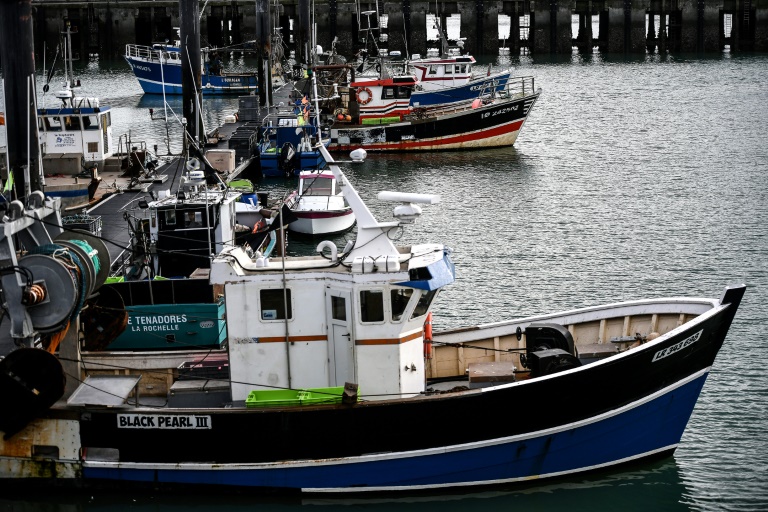Science
Chemists Develop Catalyst to Combat Marine Plastic Pollution

The persistent threat of marine plastic pollution has received renewed attention following the development of a groundbreaking catalyst by chemists at Northwestern University. This innovative catalyst efficiently breaks down Nylon-6, a durable plastic commonly found in fishing nets, into its original components within minutes, providing a potential solution to a pressing environmental crisis.
The issue of abandoned fishing gear is dire. According to the United Nations, lost or discarded fishing gear poses the gravest risk to marine life, threatening approximately 66 percent of marine animals, including all species of sea turtles and half of all seabirds. A notable example is a study conducted in the Maldives, which documented 752 ghost nets that had ensnared 131 turtles over a span of 51 months. The primary concern is that Nylon-6, the material used in these nets, is resistant to natural degradation, remaining in the environment for thousands of years and causing significant harm to marine ecosystems.
The new catalyst developed by Northwestern University researchers offers a promising avenue for addressing this issue. Unlike existing methods that often rely on extreme conditions or toxic solvents, this catalyst uses yttrium and lanthanide ions and operates without solvents, making it both efficient and environmentally friendly. In laboratory experiments, the team achieved a remarkable recovery rate of 99 percent of the plastic’s original monomers, which could then be upcycled into more valuable products, meeting the demand for durable materials.
Transforming Waste into Resources
The significance of this catalyst extends beyond merely degrading Nylon-6. It represents a shift toward upcycling waste materials rather than simply disposing of them. Currently, it is estimated that up to 1 million pounds of fishing gear is abandoned in oceans annually, with Nylon-6 nets composing at least 46 percent of the Great Pacific Garbage Patch. Traditional disposal methods involve landfilling, which does not address the underlying problem of pollution. Moreover, incineration of Nylon-6 releases harmful pollutants, including nitrogen oxides and carbon dioxide, exacerbating health and environmental issues.
Dr. Tim Sandle, a microbiologist and editor for Digital Journal, emphasizes the potential of this research. “If you don’t have a catalyst that’s selective, then how do you separate the nylon from the rest of waste?” he noted. The new catalyst’s selectivity allows it to target Nylon-6 specifically, which means industries could apply it to large quantities of unsorted waste without the need for manual sorting—an expensive and inefficient process.
The findings, published in the journal Chem, could pave the way for more sustainable practices within the plastics industry. As the demand for recycled materials grows, the ability to convert waste into valuable products will be crucial in reducing reliance on new plastic production and mitigating environmental harm.
The research not only highlights the potential for innovative solutions to combat marine pollution but also underscores the urgent need for action. As the world grapples with the impacts of plastic waste, the advancement of technologies like this catalyst could be vital in restoring the health of our oceans and protecting marine life for future generations.
-

 Science2 months ago
Science2 months agoToyoake City Proposes Daily Two-Hour Smartphone Use Limit
-

 Health3 months ago
Health3 months agoB.C. Review Reveals Urgent Need for Rare-Disease Drug Reforms
-

 Top Stories3 months ago
Top Stories3 months agoPedestrian Fatally Injured in Esquimalt Collision on August 14
-

 Technology2 months ago
Technology2 months agoDark Adventure Game “Bye Sweet Carole” Set for October Release
-

 World2 months ago
World2 months agoJimmy Lai’s Defense Challenges Charges Under National Security Law
-

 Technology3 months ago
Technology3 months agoKonami Revives Iconic Metal Gear Solid Delta Ahead of Release
-

 Technology3 months ago
Technology3 months agoSnapmaker U1 Color 3D Printer Redefines Speed and Sustainability
-

 Technology2 months ago
Technology2 months agoAION Folding Knife: Redefining EDC Design with Premium Materials
-

 Technology3 months ago
Technology3 months agoSolve Today’s Wordle Challenge: Hints and Answer for August 19
-

 Business3 months ago
Business3 months agoGordon Murray Automotive Unveils S1 LM and Le Mans GTR at Monterey
-

 Lifestyle3 months ago
Lifestyle3 months agoVictoria’s Pop-Up Shop Shines Light on B.C.’s Wolf Cull
-

 Technology3 months ago
Technology3 months agoApple Expands Self-Service Repair Program to Canada









